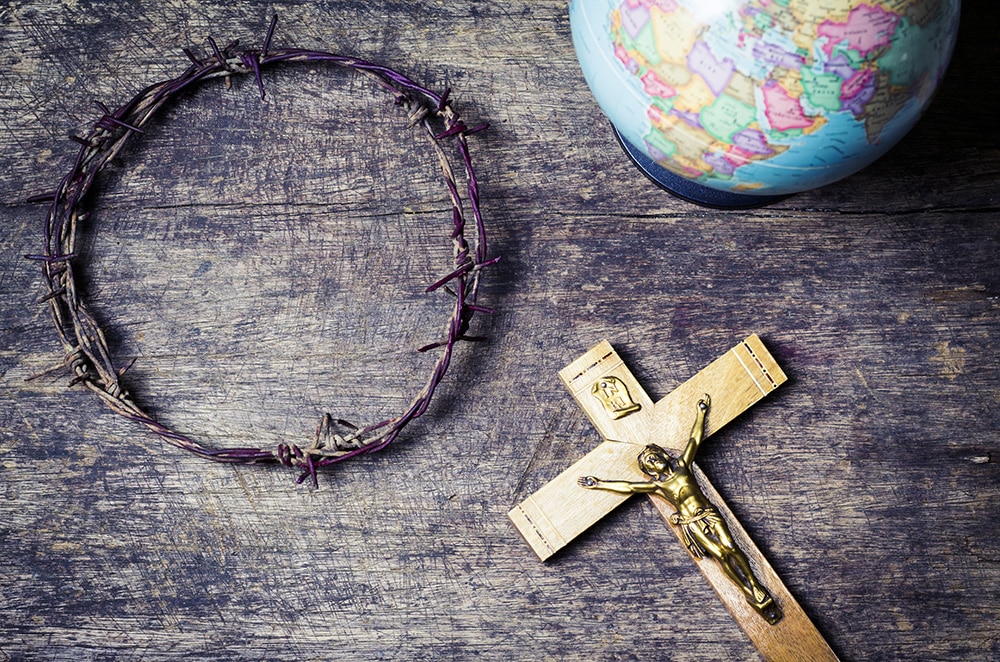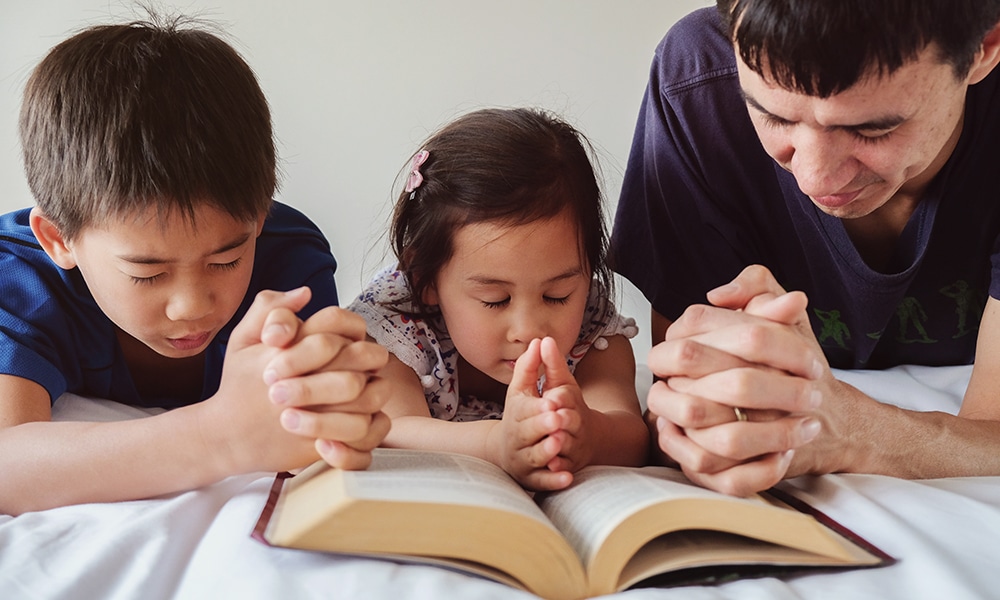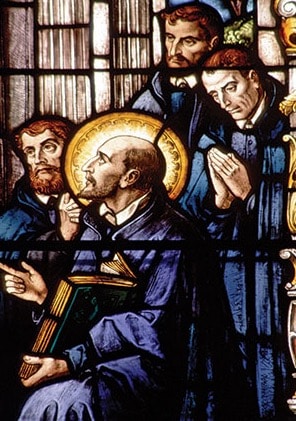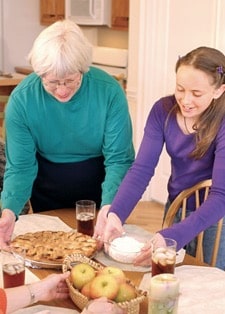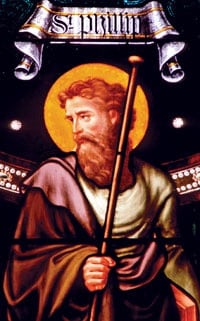While Lent is traditionally a time of fasting and penance, Christians around the world have managed over the centuries to find colorful ways to participate. Here is a sampling of traditions from around the world. At the bottom of the page you’ll find a list of Lenten resources, including A Catholic Guide to Lent, from our sister site, Simply Catholic.
Denmark
The last Sunday before Lent begins is called “Fastelavn.” Cream- or jam-filled buns are eaten and children dress up in costumes. A barrel filled with candy is beaten, much like a Mexican piñata, and the two children who break the barrel are crowned the Cat King and Cat Queen (because the barrel used to contain a live cat instead of candy.)
Greece
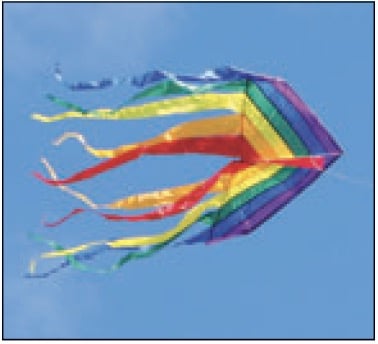 The Monday before Ash Wednesday, called Kathari Theftera, or Clean Monday, is a national holiday in Greece. Families go to the countryside and beaches for picnics and kite-flying. Greek Orthodox Christians give up all meat and animal products during Lent, and eat beans, orzo and pastas. Cookies and cakes are permitted as long as butter is omitted.
The Monday before Ash Wednesday, called Kathari Theftera, or Clean Monday, is a national holiday in Greece. Families go to the countryside and beaches for picnics and kite-flying. Greek Orthodox Christians give up all meat and animal products during Lent, and eat beans, orzo and pastas. Cookies and cakes are permitted as long as butter is omitted.
England
 The arrival of Lent is marked by making pancakes and also holding pancake races. The British Isles also have one of the most beloved Lenten customs of eating hot cross buns to symbolize the Cross. During the Middle Ages, the English traditionally marked Laetare Sunday with the celebration of “Mothering” Sunday, so-called because apprentices were given the day to go and visit their “mother churches,” the churches where they were baptized.
The arrival of Lent is marked by making pancakes and also holding pancake races. The British Isles also have one of the most beloved Lenten customs of eating hot cross buns to symbolize the Cross. During the Middle Ages, the English traditionally marked Laetare Sunday with the celebration of “Mothering” Sunday, so-called because apprentices were given the day to go and visit their “mother churches,” the churches where they were baptized.
Newfoundland, Canada
Various items are baked into pancakes on Mardi Gras. The person who gets a coin will be rich; a ring, will marry; a nail, will become a carpenter; and a thimble, will become a tailor.
Poland
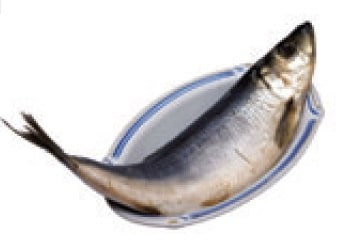 Shrove Tuesday is called “Sledziowka” (“Sledz” is the word for herring.) Various dishes of herring are typically served that day.
Shrove Tuesday is called “Sledziowka” (“Sledz” is the word for herring.) Various dishes of herring are typically served that day.
Goa, India
Catholics have their own version of Carnival with three days of music, dancing and feasting, culminating in a Mass. Notably, the Indian Catholics have traditionally been joined by Hindu and Muslim neighbors in the festivities. A similar festival is held in Kerala, where Catholics hold the Raasa parade on the day before Ash Wednesday. The name Raasa is derived from the Sanskrit for “fun,” and the festival likewise includes music and dance as well as fireworks; it also ends with a Mass. There is no feast, although there is the Chembeduppu ceremony in which offerings of raw or half-cooked rice are placed in large copper vessels (chembu) at the churches. After the Mass, the copper vessels are carried in a procession, with golden and silver crosses, flags and bands.
Ireland
When it comes to abstinence on Fridays during Lent in Ireland, the tradition in Catholic countries, of course, is that fish is eaten in place of meat. The Irish typically eat fish soup on Fridays. In the Caribbean, meanwhile, the seafood of choice is cockles.
Middle East
 Among the Melkite Catholics of Jordan, Syria and other parts of the Middle East, fasting during Lent entails abstaining from meat, dairy products, eggs, fish, olive oil and alcohol.
Among the Melkite Catholics of Jordan, Syria and other parts of the Middle East, fasting during Lent entails abstaining from meat, dairy products, eggs, fish, olive oil and alcohol.
Mexico
The final Friday of Lent is devoted to Our Lady. Known as Viernes de Dolores, “Friday of Sorrows,” altars are set up in churches and homes in her honor. On the fourth Friday in Oaxaca, called la Samaritana, aquas frescas, fruit drinks and ice cream are given to passersby in honor of the Samaritan woman who gave Jesus water at the well.
Germany
 In some parts of Germany, old Christmas trees are burned during Lent to welcome in spring (Lent being the old Germanic for “spring.”) Holy Week is also honored by the staging of processions and passion plays to remind the faithful of Our Lord’s suffering. The most famous of these is held every 10 years in Oberammergau, Germany, a custom that dates back to 1633 when the people of the town vowed to stage a passion play should God be merciful and end an outbreak of the plague. The first play was held the next year. Holy Thursday is known in Germany as “Green Thursday” (Grundonnerstag), for reasons that remain a mystery. The same name is used among the Czechs and the Slovaks. Normally, green foods are eaten, especially green salads and spinach.
In some parts of Germany, old Christmas trees are burned during Lent to welcome in spring (Lent being the old Germanic for “spring.”) Holy Week is also honored by the staging of processions and passion plays to remind the faithful of Our Lord’s suffering. The most famous of these is held every 10 years in Oberammergau, Germany, a custom that dates back to 1633 when the people of the town vowed to stage a passion play should God be merciful and end an outbreak of the plague. The first play was held the next year. Holy Thursday is known in Germany as “Green Thursday” (Grundonnerstag), for reasons that remain a mystery. The same name is used among the Czechs and the Slovaks. Normally, green foods are eaten, especially green salads and spinach.
Slovakia
On Palm Sunday, called Kvetna, or Flower Sunday, after the morning Mass, children in villages gathered behind a maypole and went through the town singing a song about Christ journeying to Jerusalem.
Bulgaria
The Lazarouvane festival is celebrated on the Saturday before Easter and honors spring and young girls. A beloved event every year, the Lazarouvane represents a kind of debut for girls. They gather on the Saturday before Palm Sunday, decorate the gates of the village with willow twigs, and then walk through the village singing. The next day, they make Palm Sunday wreaths. According to superstition, young girls who refuse to take part will never find a husband.
Needless to say, the day is also used for marriage proposals.
Philippines
On Good Friday some of the faithful in the town of San Pedro in the Philippines actually endure crucifixion as well as flagellation with sharp-tipped whips. The crucifixions do not last long enough to cause serious injury or death. Passion plays or sinakulo are also often performed during Lent. These plays are performed over several nights during Holy Week. On Holy Thursday, the most common activity among Catholics has been to visit three, seven, nine or even 14 churches. The custom of the churches is based on keeping vigil in the spirit of Christ’s journey to Gethsemane after the Last Supper. The practice likely began with the pilgrims who made their way to Rome to visit the seven great pilgrim churches.
Czech Republic
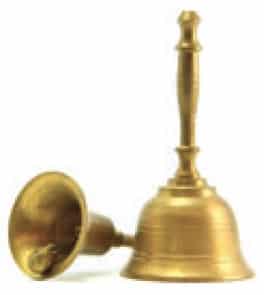 From Holy Thursday night, the bells of churches fell silent across parts of Europe, such as in Slovakia, the Czech Republic and Luxembourg. Children were told that the bells were quiet because they had gone to Rome to make confession. As there were no bells, children would be sent out with wooden clappers to call the villagers and townspeople to services for the rest of the Triduum. With dawn on Easter morning, the bells began to ring once more. In the Czech Republic, the Thursday of Holy Week is called Soot-Sweeping or Black Wednesday because chimneys were traditionally cleaned this day to prepare for Easter.
From Holy Thursday night, the bells of churches fell silent across parts of Europe, such as in Slovakia, the Czech Republic and Luxembourg. Children were told that the bells were quiet because they had gone to Rome to make confession. As there were no bells, children would be sent out with wooden clappers to call the villagers and townspeople to services for the rest of the Triduum. With dawn on Easter morning, the bells began to ring once more. In the Czech Republic, the Thursday of Holy Week is called Soot-Sweeping or Black Wednesday because chimneys were traditionally cleaned this day to prepare for Easter.
Malta
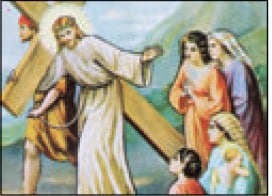 The Wednesday of Holy Week is known as Drums’ Wednesday because children go to church and drum on chairs to create the sound of thunder. The tradition of Visita Iglesia (visiting churches) is popular. Some families will visit 14 churches, with each church providing one of the Stations of the Cross. A special almond and honey cake, called kwarezimal, is a Lenten highlight on the island. Honey-coated fried bread filled with spinach is another favorite.
The Wednesday of Holy Week is known as Drums’ Wednesday because children go to church and drum on chairs to create the sound of thunder. The tradition of Visita Iglesia (visiting churches) is popular. Some families will visit 14 churches, with each church providing one of the Stations of the Cross. A special almond and honey cake, called kwarezimal, is a Lenten highlight on the island. Honey-coated fried bread filled with spinach is another favorite.
Russia
Orthodox Christians give up all animal products, omit meat and forgo oil and wine on weekdays.
Sweden
Pancakes are also eaten on “Fat Tuesday,” traditionally accompanied by bowls of pea soup.
On Holy Thursday, children dress as witches and receive candy and Easter eggs.
Italy
Bottles of holy water are traditionally passed out during Lent for use in blessing homes.
 United States
United States
In many Midwestern cities in the United States settled by Polish immigrants, paczki, a doughnutlike pastry, are eaten just before Lent, especially on Fat Tuesday.
Bermuda
Families fly kites made with wooden sticks on Good Friday to represent both the cross that Jesus died on and his Ascension into heaven.
In the Past
Rigorous fasting and abstinence during Lent was common in the past. In some areas, only one meal a day was taken during the entire 40 days. Other fasting practices included eating only bread and water; not eating until 3 p.m.; and eliminating all meat, eggs, dairy and fruit.
Interestingly, in some areas of Ireland, Wales, Germany and the Arctic, beaver tail was considered “fish” and could be consumed during the fast.
Even today, in parts of Michigan, muskrat is among the food items approved to consume on days of abstinence, including the Fridays of Lent, because the mammal lives in the water.
Counting the Days
If you count the days from Ash Wednesday until Easter, you will realize there are more than 40. The reason for this is that Sundays are not included because they are always celebrations of the Resurrection and, since the Second Vatican Council, Good Friday and Holy Saturday are considered part of the Easter Triduum instead of the last two days of Lent.
This is not true for Eastern Orthodox and Eastern-rite Catholics. They begin Lent on Clean Monday, the Monday before Ash Wednesday, and include Sundays. Lent therefore ends on the Friday before Palm Sunday. Palm Sunday and Holy Week are considered separate from Lent itself.
Matthew Bunson, editor of The Catholic Answer and the Catholic Almanac, contributed to this story.
| LENTEN RESOURCES |
|---|
|
10 tips for making Lent more meaningful |

